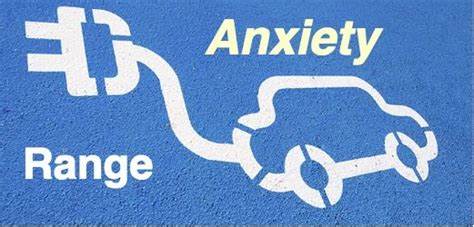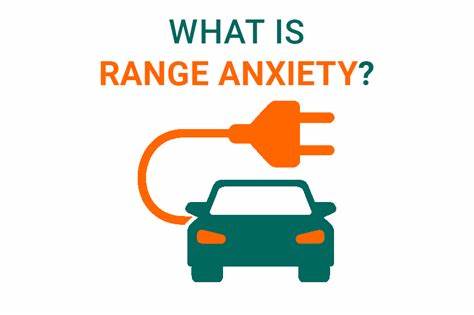
EV Range Anxiety
Introduction
EV Range Anxiety is a term that describes the fear or concern of electric vehicle (EV) owners about running out of battery charge while driving. This article aims to address concerns regarding EV Range Anxiety, which is crucial for encouraging more individuals to switch to electric vehicles and overcome the barriers associated with range limitations.
Historical Background
Electric vehicles have a long history dating back to the 19th century when they were initially developed and widely adopted. However, their popularity declined with the rise of internal combustion engine vehicles due to limited battery technology, lack of charging infrastructure, and high production costs. These initial concerns and challenges contributed to the development of EV Range Anxiety as a significant obstacle to electric vehicle adoption.
Key Concepts and Definitions
EV Range Anxiety is a term used to describe the fear or anxiety experienced by electric vehicle owners regarding the distance they can travel before their battery runs out. It is important to understand the concept of range anxiety as it relates to electric vehicles. Terms such as battery range, charging infrastructure, and driving range are key components in comprehending the challenges faced by electric vehicle owners.

Main Discussion Points
Factors contributing to EV Range Anxiety
Limited battery range and charging infrastructure: The limited distance electric vehicles can travel on a single charge and the scarcity of charging stations contribute to range anxiety.
Lack of awareness and understanding among consumers: Many potential electric vehicle owners are unfamiliar with the capabilities and limitations of electric vehicles, leading to range anxiety.
Psychological barriers and fear of running out of charge: The fear of being stranded without a charging station nearby creates anxiety for electric vehicle owners.
Addressing EV Range Anxiety
Improvements in battery technology and increased driving ranges: Advancements in battery technology have resulted in electric vehicles with higher driving ranges, reducing range anxiety.
Expansion of charging infrastructure and availability of fast-charging stations: The establishment of more charging stations, including fast-charging options, provides reassurance to electric vehicle owners.
Education and awareness campaigns: Informing consumers about the capabilities and limitations of electric vehicles through education and awareness campaigns helps alleviate range anxiety.
Integration of navigation systems and smartphone apps: Real-time information on charging stations and range availability through navigation systems and smartphone apps assists electric vehicle owners in planning their routes effectively.

Government initiatives and policies
Supportive policies and incentives: Governments worldwide are implementing policies and incentives to encourage the adoption of electric vehicles, reducing range anxiety.
Investments in charging infrastructure development: Governments and private entities are investing in the expansion of charging infrastructure to address range anxiety concerns.
Collaboration between automakers, governments, and utilities: Partnerships between various stakeholders facilitate the development of comprehensive solutions to overcome range anxiety challenges.
Case Studies or Examples
Real-world examples of individuals and organizations that have effectively addressed EV Range Anxiety can inspire potential electric vehicle owners. Success stories of electric vehicle owners who have overcome range anxiety challenges highlight the practical solutions adopted by these individuals.
Current Trends or Developments
Recent trends in electric vehicle technology have significantly reduced EV Range Anxiety. Advancements in battery technology, such as increased energy density and faster charging capabilities, have extended the driving range of electric vehicles. Additionally, the expansion of fast-charging networks has made charging more accessible and convenient for electric vehicle owners. Research findings and studies related to EV Range Anxiety and its impact on consumer behavior provide valuable insights into addressing this concern effectively.

Challenges or Controversies
While the severity and impact of range anxiety are widely recognized, there are differing viewpoints on its significance. Some argue that the range anxiety concern is overstated, given the advancements in electric vehicle technology and the growing charging infrastructure. However, others contend that range anxiety is a genuine barrier to widespread electric vehicle adoption that requires further attention.
Future Outlook
Speculating on the future implications and directions for addressing EV Range Anxiety highlights the potential advancements in battery technology and charging infrastructure. Further improvements in battery technology, such as solid-state batteries, could significantly increase driving ranges and alleviate range anxiety concerns. Moreover, the rise of autonomous vehicles and shared mobility services may reduce range anxiety as these technologies optimize charging and route planning for electric vehicles.
Conclusion
Addressing EV Range Anxiety is crucial for the widespread adoption of electric vehicles. By improving battery technology, expanding charging infrastructure, educating consumers, and implementing supportive policies, the barriers associated with range anxiety can be overcome. Reducing range anxiety will accelerate the transition to a sustainable transportation future.




